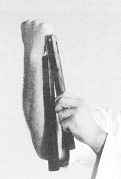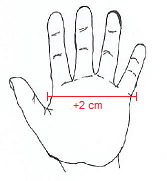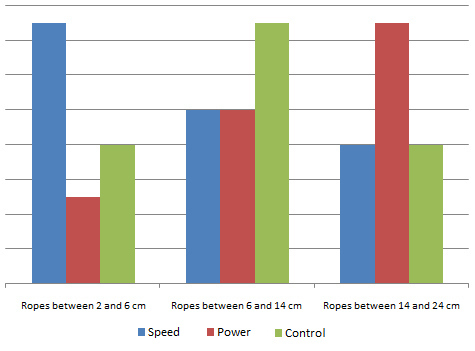 It is very important to have Nunchaku of the right size, first of all for comfort, but also for the handling: you will not require the same type of handling according to what you want to do with your Nunchaku (for example freestyle or combat). Furthermore, a Nunchaku which not fit to your size may cause injuries...
It is very important to have Nunchaku of the right size, first of all for comfort, but also for the handling: you will not require the same type of handling according to what you want to do with your Nunchaku (for example freestyle or combat). Furthermore, a Nunchaku which not fit to your size may cause injuries...


 As you can see on the graph, shorter is the rope, faster is the Nunchaku, at the expense of striking power. The term "control" defines how easier it is to handle such Nunchaku: a great control means that you will require less time to learn the bases, but of course, with the experience, this data becomes irrelevant. This graph act just as an indication, because it does not exists a "best Nunchaku", they can all be good with training. Beyond measurements given on the graph, Nunchaku often becomes very hard to handle.
In addition to the size of the branches and the length of the rope, another element must be taken into consideration: the weight. Indeed, the weight is very important and must be selected according to the type use you want to have with your Nunchaku:
As you can see on the graph, shorter is the rope, faster is the Nunchaku, at the expense of striking power. The term "control" defines how easier it is to handle such Nunchaku: a great control means that you will require less time to learn the bases, but of course, with the experience, this data becomes irrelevant. This graph act just as an indication, because it does not exists a "best Nunchaku", they can all be good with training. Beyond measurements given on the graph, Nunchaku often becomes very hard to handle.
In addition to the size of the branches and the length of the rope, another element must be taken into consideration: the weight. Indeed, the weight is very important and must be selected according to the type use you want to have with your Nunchaku:
